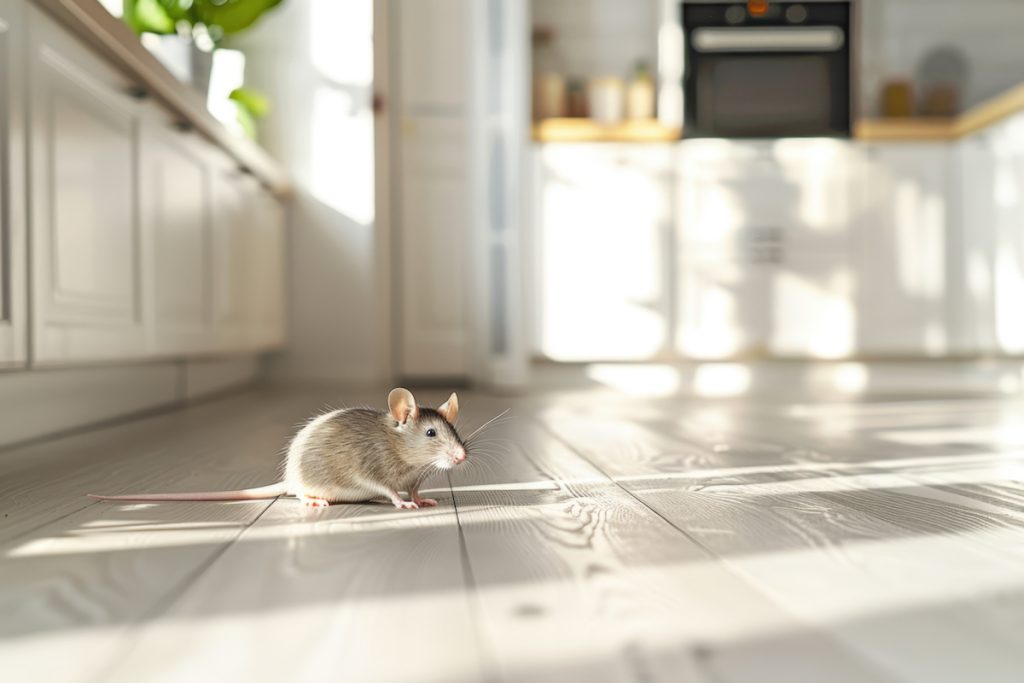As temperatures drop in St. Louis, homeowners face an unwelcome reality—mice seek warm shelter inside homes. Additionally, fall marks the peak season for mouse infestation. These persistent rodents prepare for winter by finding cozy indoor spaces. Understanding prevention strategies now can save you from dealing with a full-blown mouse infestation later. Contact Omni Pest Solutions for professional guidance on keeping your home rodent-free this season.
Why Do Mice Invade Homes During Fall?
What makes fall the prime time for rodent invasions in Missouri? As outdoor temperatures begin to plummet, mice instinctively search for warm, secure locations. Furthermore, these creatures need to establish their winter nests. Additionally, natural food sources become scarce during this season. Consequently, this drives these opportunistic creatures toward homes where crumbs and stored food provide easy meals.
Moreover, mice can squeeze through openings as small as a dime. Even well-maintained homes remain vulnerable to invasion as a result. Furthermore, female mice can produce up to 10 litters per year. This means a small problem can quickly escalate into a major mouse infestation. The reproductive cycle accelerates when mice find ideal indoor conditions. Consistent warmth and food availability create perfect breeding environments.
What Are the Warning Signs of Mouse Activity?
How can you identify early signs before facing a complete mouse infestation? Mouse removal becomes significantly easier when you catch the problem early. This requires careful observation of your surroundings. Look for these telltale indicators that suggest rodent activity in your St. Louis home.
Key Warning Signs Include:
- Small, dark droppings near food sources or along walls
- Gnaw marks on food packaging, furniture, or electrical wires
- Scratching or scurrying sounds within walls, especially at night
- Greasy smudge marks along baseboards where mice travel
- Shredded paper, fabric, or insulation used for nesting material
- Strong, musky odor in confined spaces like closets or pantries
Consequently, homeowners who notice these signs should act immediately. This prevents the situation from worsening significantly. Mouse removal strategies work best when implemented at the first sign of activity. Waiting for a full-scale invasion makes the problem much harder to solve.
Where Do Mice Typically Enter Homes?
Which entry points do mice commonly use to access St. Louis residences? Understanding how mice gain access helps homeowners focus their prevention efforts effectively. Accordingly, you can target the most vulnerable areas in your home. These small rodents are surprisingly athletic. They can climb, jump, and squeeze through incredibly tight spaces.
Common Entry Points:
- Gaps around doors and windows, especially where weatherstripping has deteriorated
- Cracks in foundations or exterior walls
- Openings around utility lines, pipes, and vents
- Damaged screens on windows or vents
- Spaces under garage doors or sliding doors
- Holes in rooflines or damaged soffits
Moreover, mice often create secondary entry points by gnawing through materials. Wood, plastic, and even thin metal can be compromised. Therefore, regular inspection of your home’s exterior becomes crucial. This forms the foundation for effective mouse removal prevention strategies.

How to Mouse-Proof Your Home’s Exterior
What exterior modifications can effectively block mouse access? Creating a fortress-like barrier around your home requires systematic attention to potential entry points. Nevertheless, this proactive approach proves far more cost-effective than dealing with an established mouse infestation.
First, start by walking around your home’s perimeter with a critical eye. Examine the foundation, walls, and roofline for any gaps or cracks. Next, use steel wool and caulk to seal openings smaller than a quarter-inch. Mice cannot chew through steel wool as a result. For larger gaps, hardware cloth or metal flashing provides durable protection. This material withstands gnawing attempts effectively.
Additionally, trim vegetation and tree branches away from your home’s exterior. These provide highways for mice to reach upper-level entry points. Also, store firewood, lumber, and outdoor equipment at least 20 feet from your home’s foundation. This eliminates potential nesting sites near your home.
What Indoor Prevention Strategies Work Best?
How can interior home management discourage mouse settlement? Effective mouse removal starts with eliminating the attractions that draw rodents indoors. Mice seek three basic necessities: food, water, and shelter. Controlling these elements makes your home less appealing to potential invaders.
Food Storage and Cleanliness:
- Store all food in airtight containers made of glass or thick plastic
- Clean up spills and crumbs immediately after meals
- Don’t leave pet food dishes out overnight
- Regularly clean behind appliances where food debris accumulates
- Keep garbage cans tightly sealed and emptied frequently
Moisture Control:
- Fix leaky pipes, faucets, and appliances promptly
- Use dehumidifiers in basements and crawl spaces
- Ensure proper ventilation in bathrooms and kitchens
- Address condensation issues around windows and pipes
Furthermore, decluttering storage areas eliminates potential nesting sites. This also makes it easier to spot signs of mouse activity. Regular cleaning becomes much more effective as a result.
When Should You Consider Professional Mouse Removal?
At what point does a mouse problem require professional intervention? While prevention remains the best strategy, sometimes homeowners discover they’re already dealing with an established situation. They face an established mouse infestation despite their best efforts. Professional mouse removal services bring expertise, specialized equipment, and comprehensive solutions. DIY methods often cannot match these professional approaches.
Consider calling professionals when you notice multiple signs of mouse activity. Also, call when you hear consistent scratching sounds. Furthermore, call if you find evidence of breeding, such as nests with baby mice. Moreover, if previous attempts at how to get rid of mice have failed, professionals can help. They can identify underlying issues you might have missed.
Professional services also prove essential when dealing with large-scale infestations. They’re crucial when mice have accessed hard-to-reach areas. Wall voids or HVAC systems require specialized knowledge. Experienced technicians can locate and seal entry points that homeowners often overlook. This ensures long-term prevention rather than temporary fixes.
Ready to Prevent Mouse Infestation? Contact Omni Pest Solutions Today!
Don’t let a mouse infestation disrupt your St. Louis home this fall season! Omni Pest Solutions provides comprehensive mouse removal services. These services are tailored to your specific needs and situation.
When you call Omni Pest Solutions, you can expect:
- Free, no-obligation estimates
- Integrated Pest Management-approved techniques and verified solutions
- 100% satisfaction guarantee—if you are not happy with your service, we will return and re-treat your space at no additional cost
- Convenient appointment times—often able to provide same-day service
- Treatments that are both effective and safe for you, your family, and the environment
- A commitment to delivering service that exceeds your expectations
Our team isn’t interested in trying to “sell” you on treatments. Instead, we work with you to develop a customized plan. This plan gets to the root of your infestation—so your peace of mind is restored quickly. From a single-family home to a large warehouse or apartment complex, there is no infestation too big or small for our team. a single-family home to a large warehouse or apartment complex, there is no infestation too big or small for our team.

